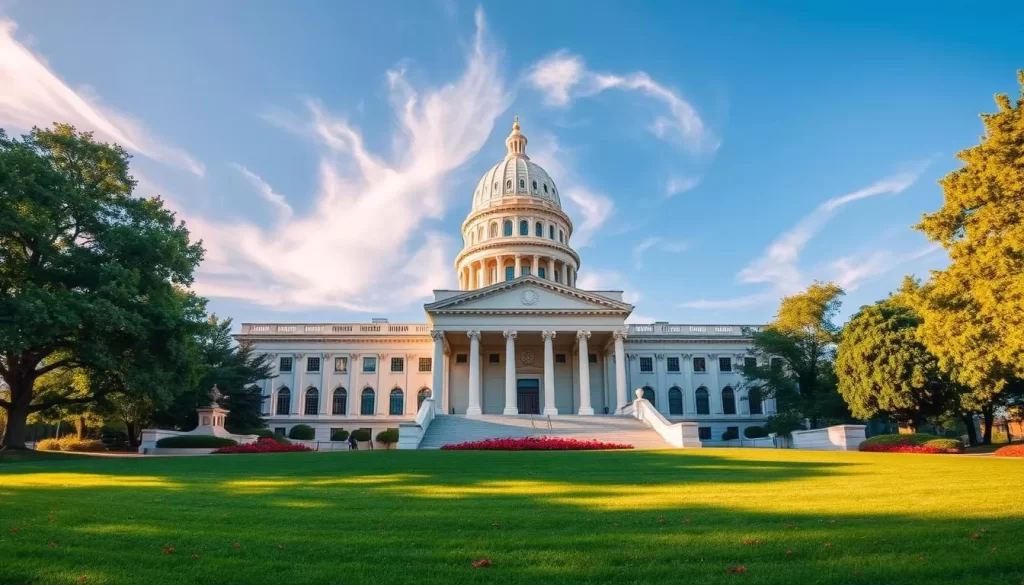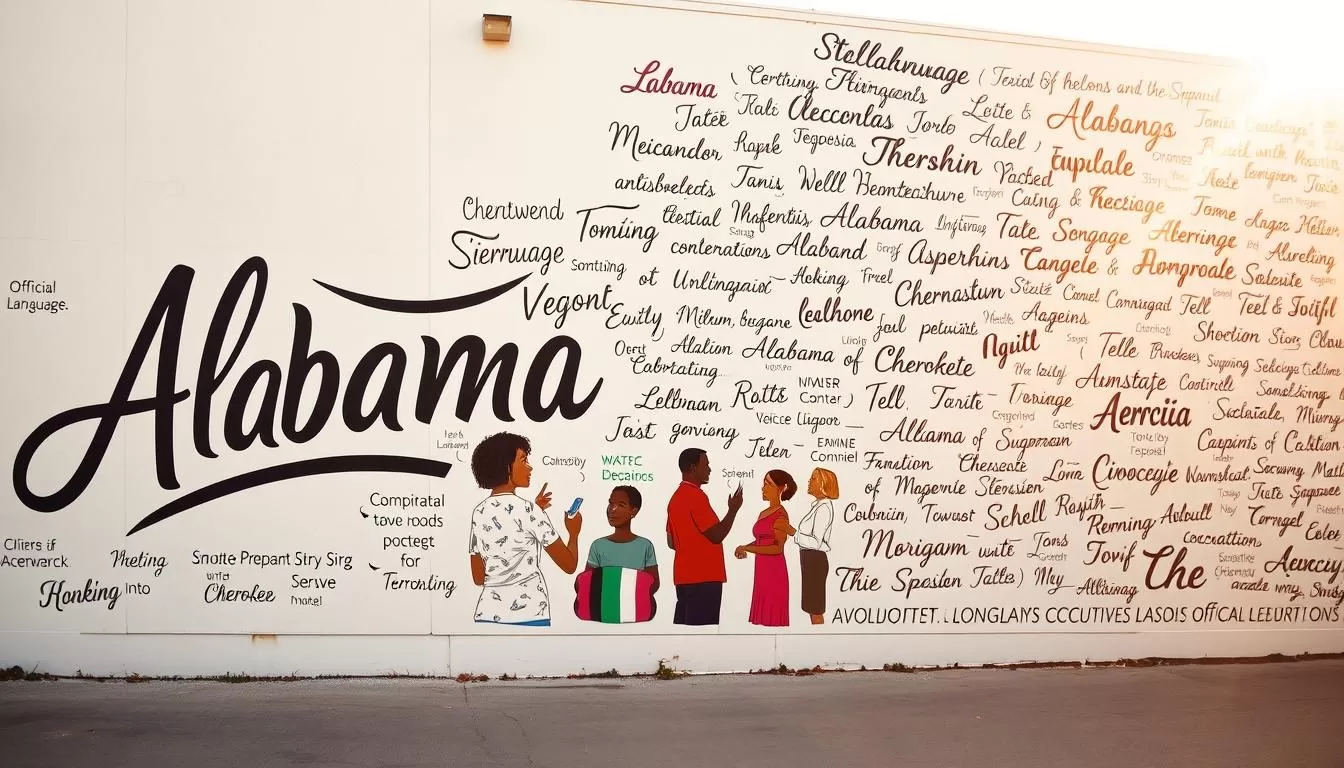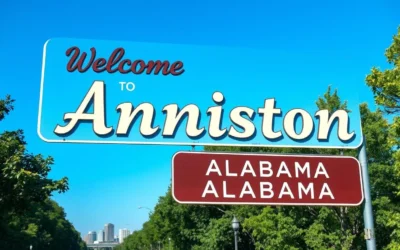✓ Accommodations ✓ Flights ✓ Rental Cars
You’re about to explore the diverse linguistic landscape of Alabama. With a predominantly English-speaking population, the state is home to a growing number of non-English language speakers.
As you delve into this article, you’ll discover how English dominates as the primary language, while other languages, such as Spanish, continue to grow in presence throughout the state.
You’ll gain insight into the language demographics and the impact of English-only legislation on government services and education. This will help you understand the current language situation in Alabama and what the future might hold for linguistic diversity.
Language Landscape of Alabama
As you explore Alabama, you’ll discover a rich linguistic tapestry that reflects the state’s diverse cultural heritage. The language landscape is characterized by a predominant language and a diverse array of secondary languages spoken across the state.
English as the Predominant Language
English is the primary language spoken in Alabama, with approximately 95.8% of residents speaking it at home. This dominance is evident in daily life, from government services to education and business. You’ll find that nearly 96% of the population uses English as their primary language, making it the most widely spoken language in the state.
Census data shows that the vast majority of Alabama residents speak English, reflecting the state’s cultural and historical ties to the broader American English-speaking community.
Linguistic Diversity in the Heart of Dixie
While English is the predominant language, Alabama’s linguistic landscape is more diverse than you might expect. Over 4% of the population speaks languages other than English at home, with Spanish being the most prevalent at 3.2% of the population, totaling approximately 148,000 speakers. Other languages spoken in the state include Korean, Chinese, Vietnamese, Arabic, German, and French.

The linguistic diversity in Alabama is influenced by historical immigration patterns and demographic shifts. Urban areas tend to show greater linguistic diversity compared to rural communities, reflecting broader trends in language distribution.
Official Language Status in Alabama
In 1990, Alabama took a significant step by making English its official language through a constitutional amendment. This move reflects the broader trend in the United States, where many states have adopted similar legislation to establish English as their official language.

English-Only Legislation
The English-only legislation in Alabama was enacted to ensure that all government services and communications are conducted in English. This legislation affects various aspects of life in the state, including government documents and public services. As one of 31 states with such legislation, Alabama follows a trend seen across the United States.
- The legislation was approved by voters in 1990 as a constitutional amendment.
- It reflects similar movements in other states across the U.S.
- The policy impacts government documents, services, and communications.
Impact on Government Services and Education
The official language policy has significant implications for government services and education in Alabama. For government services, it means that all official documents and communications are in English. In education, the policy affects how schools address the needs of students with limited English proficiency, impacting the population that requires additional language support.
The implementation of this policy varies across different government agencies and educational institutions. Understanding these variations is crucial for assessing the overall impact on the state‘s population.
Alabama, United States: Official and widely spoken languages
You’ll find that Alabama’s linguistic diversity reflects the broader trends seen in the United States, with multiple languages being spoken today. The state’s language landscape is shaped by its history, immigration patterns, and cultural exchange.
As you explore the various languages spoken in Alabama, you’ll notice that some communities have maintained their linguistic heritage through cultural organizations and language schools.
Spanish: The Most Common Non-English Language
Spanish is the most common non-English language spoken in Alabama, with approximately 148,000 speakers (3.2% of the population). About 46.2% of Spanish speakers in Alabama report speaking English less than “very well.” You’ll discover that Spanish dominates as the most widely spoken non-English language in Alabama today, with communities concentrated in urban areas and agricultural regions.
Asian Languages in Alabama

Asian languages also have a significant presence in Alabama. Korean (8,124 speakers), Chinese (9,554 speakers), and Vietnamese (6,946 speakers) are among the most commonly spoken Asian languages. Many Asian language speakers came to Alabama through specific waves of immigration, often related to educational opportunities or employment in manufacturing and technology sectors.
European Languages with Historical Presence

European languages like German and French have a historical presence in Alabama. German (8,205 speakers) and French (6,848 speakers) reflect earlier immigration patterns to the United States. Some European language communities have maintained their linguistic heritage through cultural organizations and language schools that continue to operate today.
These language communities contribute to Alabama’s cultural landscape and economic development. As you understand the linguistic diversity of Alabama, you’ll appreciate the role that languages play in shaping the state’s identity.
English Proficiency Among Non-Native Speakers
As you explore the linguistic landscape of Alabama, you’ll notice the varying levels of English proficiency among non-native speakers. This variation can impact their daily lives, from accessing healthcare and education to participating in the workforce. Understanding the English proficiency levels among different language groups is essential for addressing the needs of Alabama’s diverse population.
Limited English Proficiency (LEP) Statistics
According to data from the Migration Policy Institute, the levels of English proficiency vary significantly among different language groups in Alabama. For instance, approximately 46.2% of Spanish speakers report speaking English less than “very well.” Other language groups with notable LEP rates include Korean (61.1%), Chinese (57.3%), and Vietnamese (52.7%).
The data highlights the challenges faced by LEP individuals in Alabama. You can see the impact of limited English proficiency on various aspects of life, including education, healthcare, and economic opportunities. The statistics indicate that Asian language speakers generally report higher rates of limited English proficiency compared to other languages.

Language Access Services in Alabama
Federal civil rights laws require organizations receiving federal funding to provide language access services to people with limited English proficiency. In Alabama, healthcare systems, courts, and government agencies have developed various approaches to meet these language access requirements. You can expect to find interpreter services and translated materials in multiple languages, although the availability and quality of these services vary across different regions of the states in the United States.
To further understand the issue, let’s examine some key points:
- The largest LEP population in Alabama consists of Spanish speakers, with nearly half reporting they speak English less than “very well.”
- The LEP rates among Asian language speakers are generally higher, with Korean and Chinese speakers facing significant challenges.
- Federal laws mandate language access services for LEP individuals in federally funded programs.
- The quality and availability of interpreter services and translated materials vary across Alabama.
The diverse linguistic landscape of Alabama necessitates a comprehensive approach to addressing the needs of LEP individuals. By understanding the English proficiency levels among different language groups and ensuring access to language services, you can better support the integration of non-native English speakers into the community.
Conclusion: The Future of Language Diversity in Alabama
Alabama’s language diversity, though lower than the national average, is on the rise, driven by various demographic and economic factors. As of recent data, approximately 4.2% of Alabama’s population speaks a language other than English at home. You can expect the state‘s linguistic landscape to continue evolving based on current trends.
The future of language diversity in Alabama will likely be shaped by international immigration and domestic migration patterns within the United States. Economic factors, including industry development and job opportunities, will influence the growth or decline of various language communities. Educational institutions are adapting to serve diverse student populations with varying language needs.
As you look to the future, it’s clear that Alabama’s spoken languages will continue to diversify. Initiatives to preserve heritage languages while promoting English acquisition among immigrant communities today will play a crucial role. This article has provided you with a comprehensive understanding of Alabama’s current language situation and the factors that will shape its linguistic future.
The above is subject to change.
Check back often to TRAVEL.COM for the latest travel tips and deals.






